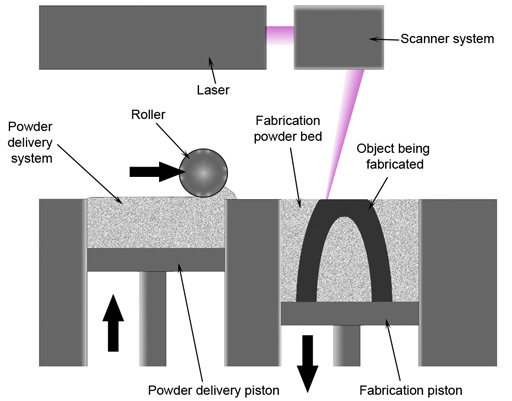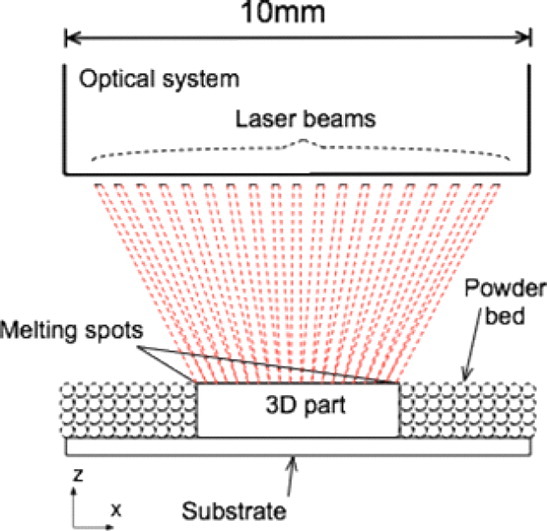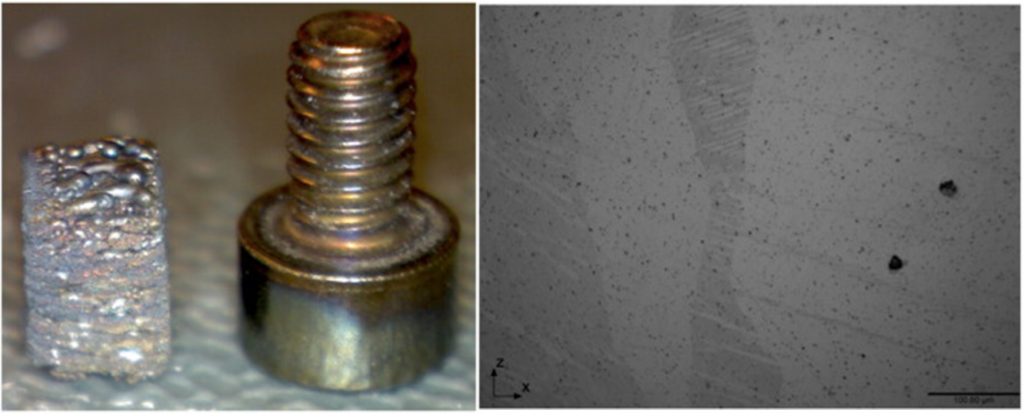Researchers in the departments of Mechanical, and Electronic & Electrical Engineering at the University of Sheffield in the UK, have demonstrated an alternative technique for 3D printing metal.
Termed ‘Diode Area Melting’, the method seeks to overcome the key limitations of existing laser melting techniques, including the expense of machines and energy, and the rate of production.
Limitations of selective laser melting (SLM)
The key cause limiting the speed and creating a high price for SLM machines is the use of a single laser. This powerful beam is directed on the X and Y axis by two electric sensing galvo mirrors. A number of manufacturers offer additive manufacturing machines with multiple lasers, partly to increase the speed of the machines.

The University of Sheffield proposal uses multiple laser diodes that are programmed to turn on and off in sequence as they move across the print bed.

The power of multiple lasers
Producing only 2.63 watts of energy, a single laser diode is unable to produce the heat and energy required to melt metal. But in the combined effort of a whole bar of laser diodes, researchers at Sheffield were able to create a melt rate of 99.7% in a stainless steel alloy powder.
The custom laser diode bar was tuned to increase absorption, and consequent melting of the powder, through the use of shorter laser wavelength. Reducing the length to 808 nano-meters helped to focus the energy produced by the diodes and create a temperature in excess of 1400℃.

In the conclusion of the study introducing this method, authors state,
Previously, the use of low power diode bars for melting common SLM materials would be easily dismissed as being unable to provide the required energy density to melt these materials. This work has shown that this energy density challenge can be overcome and presents a first step in developing a novel and efficient high speed metallic additive manufacturing process.
A full paper of this research is published in Materials & Design journal Volume 117 and can be read online via Science Direct. Author attributions are made to Miguel Zavala-Arredondo, Nicholas Boone, Jon Willmott, David T.D. Childs, Pavlo Ivanov, Kristian M. Groom and Kamran Mumtaz.
A UK hub of additive manufacturing
The University of Sheffield has a strong reputation for advanced manufacturing and 3D printing technologies. Professor Neil Hopkinson co-invented the high speed sintering (HSS) process of 3D printing in his time at the university. Furthermore, the institution opened the reconfigurable Factory 2050 which is at the center of industrial manufacturing within the area.
To stay up to date with the latest 3D printing research from leading universities, sign up to the 3D Printing Industry newsletter and follow our active social media accounts.
Featured image shows a diode laser with cent for scale. Photo from the NASA Jet Propulsion Laboratory (JPL)



